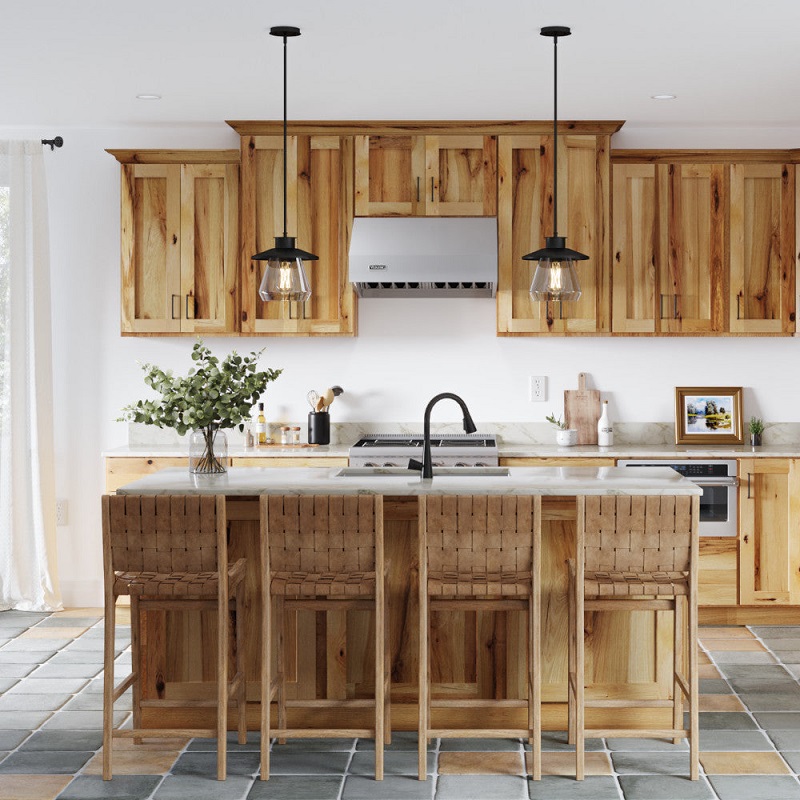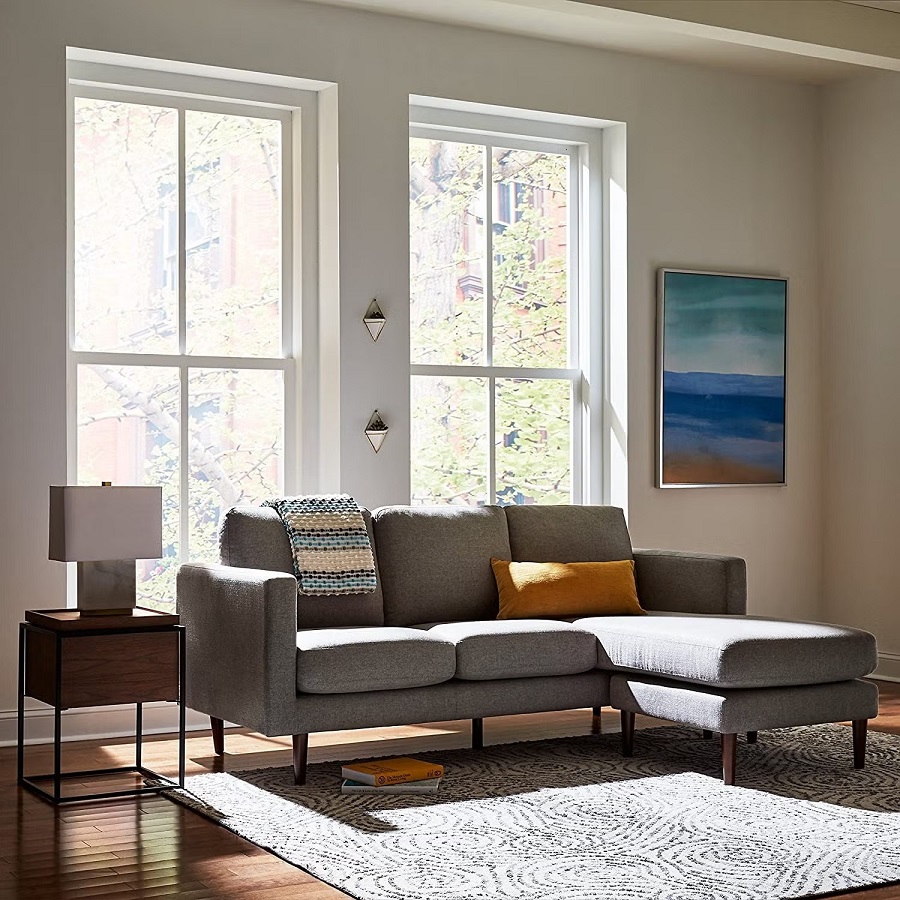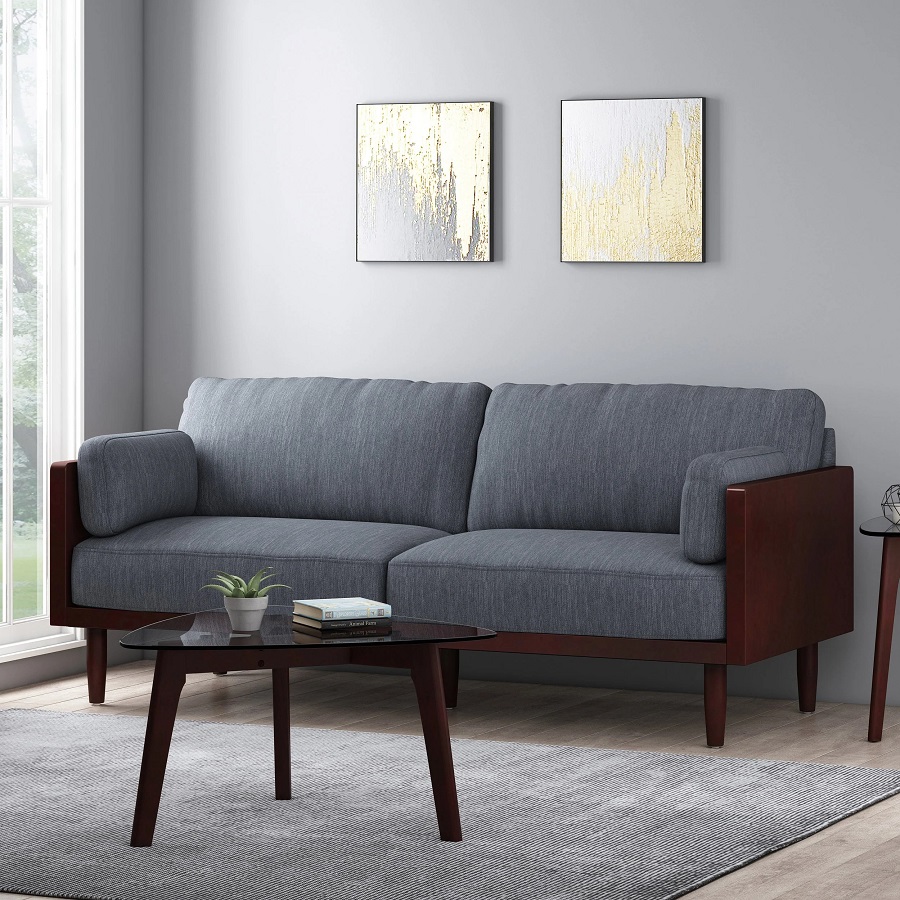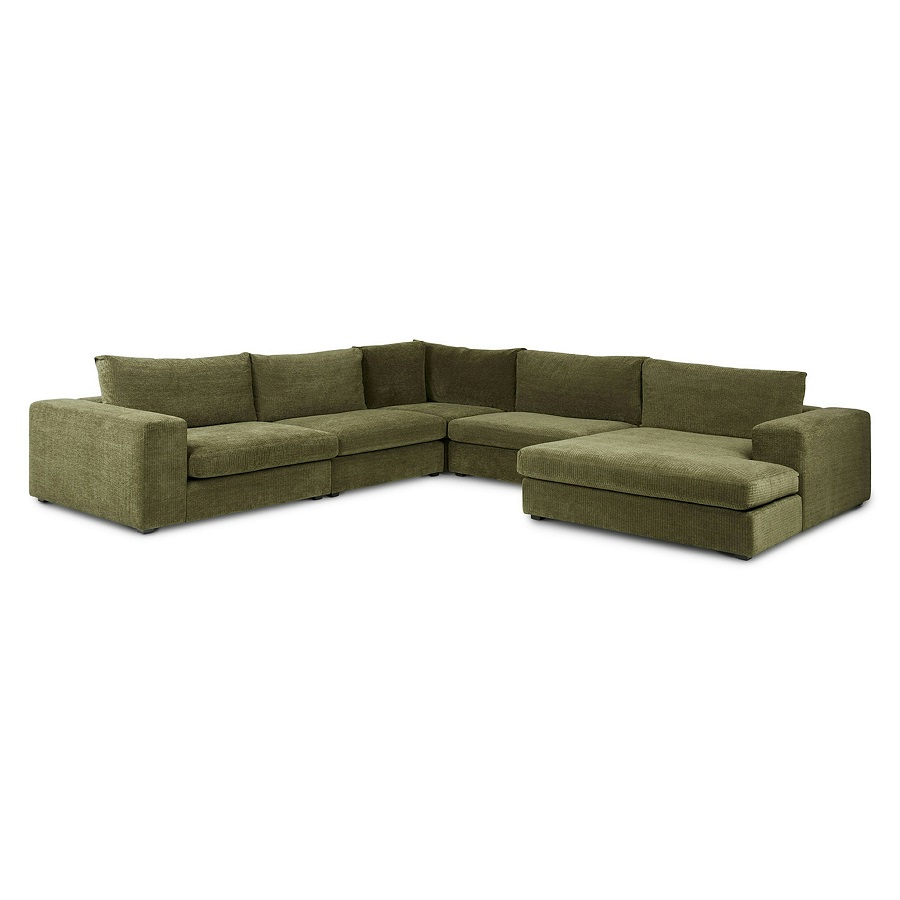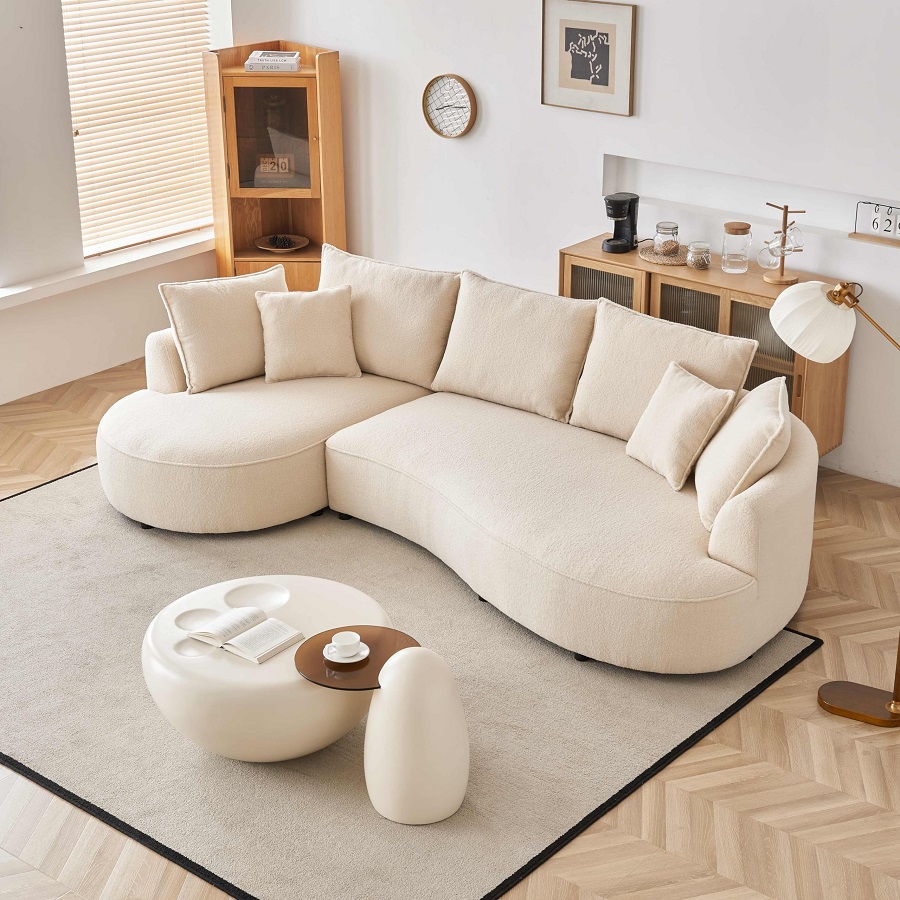Hickory cabinets are a popular choice for kitchens due to their durability, natural beauty, and distinctive grain patterns. Their warm, rich tones can create a rustic or classic look in your kitchen, but selecting the right color scheme can be challenging. This article explores various color schemes for kitchens with hickory cabinets, offering design tips and ideas to help you create a cohesive and aesthetically pleasing space.
Understanding Hickory Cabinets
Characteristics of Hickory Wood
Hickory is known for its robust and durable nature, making it an excellent choice for kitchen cabinetry. The wood features a range of colors from light to dark brown, with a varied grain pattern that adds texture and interest to the kitchen. The natural color variations and distinctive grain patterns can sometimes make it difficult to choose complementary colors, but understanding these characteristics can guide you in selecting an effective color scheme.
How Hickory Cabinets Influence Kitchen Design
The unique appearance of hickory cabinets can set the tone for your entire kitchen. The rich, warm hues of hickory can make a kitchen feel inviting and cozy. When designing your kitchen, consider how the color of the cabinets will interact with other elements like countertops, backsplashes, and flooring. The goal is to create a balanced look where the hickory cabinets complement rather than overwhelm the space.
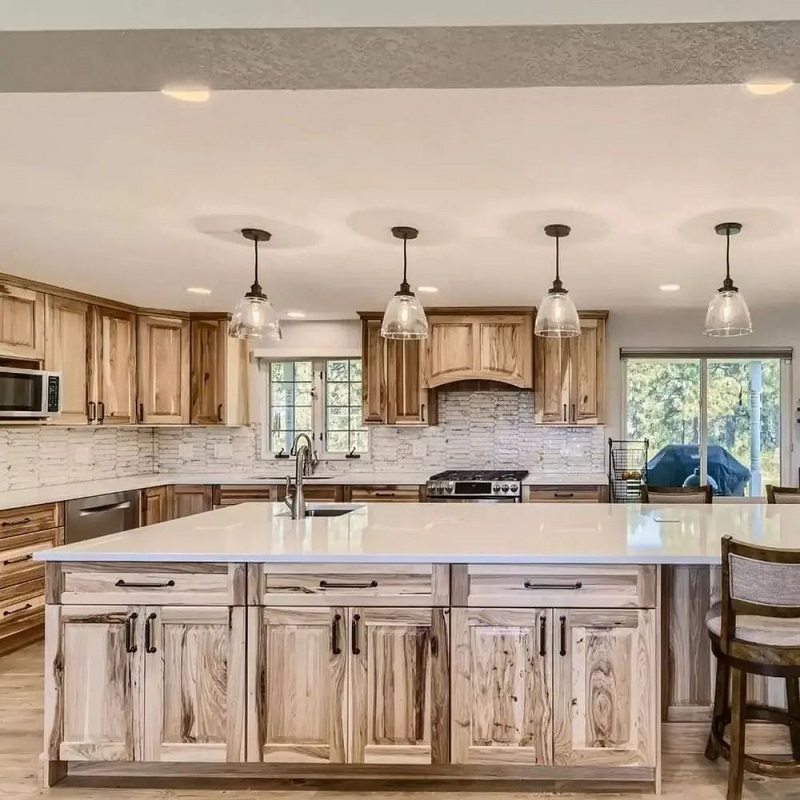
Classic Color Schemes for Hickory Cabinets
Neutral Tones for a Timeless Look
Neutral colors are always a safe bet when working with hickory cabinets. Shades like beige, gray, and white can provide a classic, timeless backdrop that allows the natural beauty of hickory to stand out.
Choosing the Right Neutrals
For a harmonious look, opt for neutral tones that are slightly warmer to complement the warmth of the hickory. Warm grays, taupe, and creamy whites are excellent choices. These colors can be used for walls, countertops, and backsplashes to create a cohesive look.
Balancing Neutrals with Hickory
When using neutral colors, it’s essential to balance them with the rich tones of hickory. Ensure that the neutral shades you select do not clash with the wood’s natural hues. Consider using lighter neutrals on walls and darker tones on countertops or floors to create a balanced and visually pleasing contrast.
Earthy Tones for a Natural Feel
Earthy tones, such as greens, browns, and terracottas, can enhance the natural aesthetic of hickory cabinets. These colors bring an organic, grounded feel to the kitchen and complement the wood’s natural warmth.
Incorporating Earthy Colors
To effectively use earthy tones, start with soft, muted colors for the walls, such as sage green or warm beige. For countertops and backsplashes, consider using materials in richer, earthier tones, like stone or ceramic tiles in terracotta or slate colors. These choices will harmonize with the hickory while adding depth and character to the space.
Creating Contrast with Earthy Tones
Ensure that the earthy colors you choose provide enough contrast with the hickory cabinets. This contrast will help the cabinets stand out and prevent the space from feeling too monochromatic. Using varying shades and textures can add dimension and interest to your kitchen design.
Modern Color Schemes for Hickory Cabinets
Bold Colors for a Contemporary Twist
If you prefer a more modern look, incorporating bold colors can create a striking contrast with hickory cabinets. Colors like navy blue, deep green, and charcoal gray can add a contemporary edge to your kitchen design.
Selecting Bold Accents
When using bold colors, consider applying them to specific areas, such as an accent wall, a kitchen island, or the backsplash. This approach allows you to introduce vibrant hues without overwhelming the space. For example, a navy blue backsplash can create a dramatic focal point against the warm tones of hickory.
Balancing Bold Colors
To balance bold colors with hickory cabinets, ensure that the bold hues are used sparingly. The richness of the hickory wood should still be a prominent feature of the kitchen. Incorporate neutral or complementary colors for other elements, such as countertops and flooring, to maintain visual harmony.
Cool Colors for a Refreshing Contrast
Cool colors, like blues and greens, can provide a refreshing contrast to the warmth of hickory cabinets. These colors can create a modern and serene kitchen environment.
Using Cool Colors Effectively
Incorporate cool colors through backsplash tiles, countertop materials, or even kitchen accessories. A soft blue or teal can be particularly effective in creating a calm and inviting atmosphere. For countertops, consider materials like quartz or granite in cool tones to complement the hickory cabinets.
Ensuring Cohesion with Cool Colors
Ensure that the cool colors you choose work well with the hickory’s natural tones. Soft blues and greens can blend seamlessly with hickory, but be mindful of the undertones in both the cabinets and the cool colors. Avoid shades that clash with the wood’s natural hues.
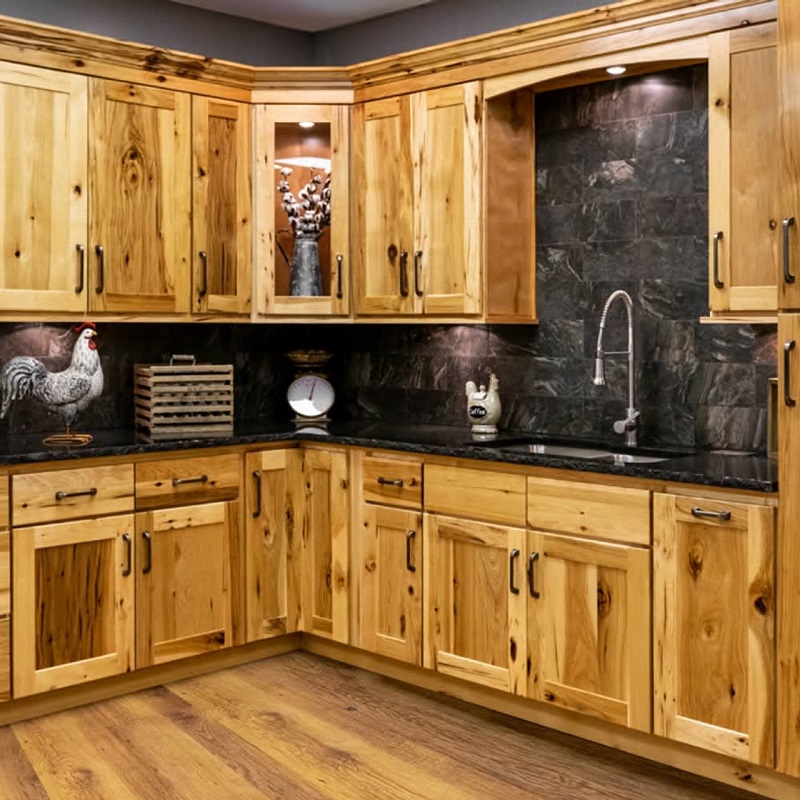
Rustic and Farmhouse Color Schemes for Hickory Cabinets
Warm, Cozy Colors for a Rustic Vibe
For a rustic or farmhouse-style kitchen, warm and cozy colors can enhance the natural charm of hickory cabinets. Shades like barn red, mustard yellow, and deep brown can create a welcoming and homey atmosphere.
Choosing Warm Colors
Opt for warm colors that evoke a sense of coziness and comfort. Barn red or mustard yellow can be used for accent walls or smaller elements, while deeper browns can be incorporated into countertops or flooring. These colors complement the natural warmth of hickory and enhance the rustic feel.
Combining Warm Colors with Hickory
To ensure that warm colors work well with hickory cabinets, choose shades that harmonize with the wood’s tones. Balance the warmth of the colors with the richness of the hickory to avoid an overly warm or heavy look. Incorporate textures, like wooden beams or vintage accessories, to complete the rustic style.
Soft Pastels for a Farmhouse Look
Soft pastel colors can create a charming farmhouse look that complements the natural beauty of hickory cabinets. Colors like soft blue, pale green, and light pink can add a touch of vintage appeal to your kitchen.
Implementing Pastels
Use pastel colors for walls, cabinetry accents, or even smaller details like curtains and dishware. A pale blue backsplash or light green walls can add a subtle pop of color without overpowering the space.
Coordinating Pastels with Hickory
When using pastels, ensure they do not clash with the hickory cabinets. Opt for pastel shades that have a warm undertone to complement the hickory’s natural hues. Incorporate neutral tones for other elements to maintain a balanced and cohesive design.
Trends and Innovations in Kitchen Color Schemes
Integrating Trendy Colors with Hickory Cabinets
Incorporating trendy colors can give your kitchen a modern edge while complementing the classic appeal of hickory cabinets. Colors like emerald green, matte black, and rich jewel tones can create a sophisticated and contemporary look.
Choosing Trendy Hues
Select trendy colors that resonate with your personal style and the overall design of your kitchen. Emerald green or deep jewel tones can be used for accent walls or decorative elements, while matte black can add a sleek touch to fixtures or appliances.
Balancing Trends with Timeless Elements
While trendy colors can add excitement to your kitchen, balance them with timeless elements to ensure longevity. Combining trendy hues with classic materials and finishes will help create a look that remains stylish over time.
Innovative Textures and Patterns
In addition to colors, innovative textures and patterns can enhance the design of your kitchen with hickory cabinets. Incorporating textured tiles, patterned backsplashes, or unique countertop materials can add visual interest and depth.
Experimenting with Textures
Explore different textures for your backsplash, countertops, or flooring to complement the hickory cabinets. Textured tiles or patterned backsplashes can create a dynamic visual effect and enhance the overall design.
Coordinating Patterns with Hickory
When using patterns, ensure they complement the hickory’s natural grain rather than compete with it. Opt for subtle patterns or textures that enhance the wood’s beauty without overwhelming the space.
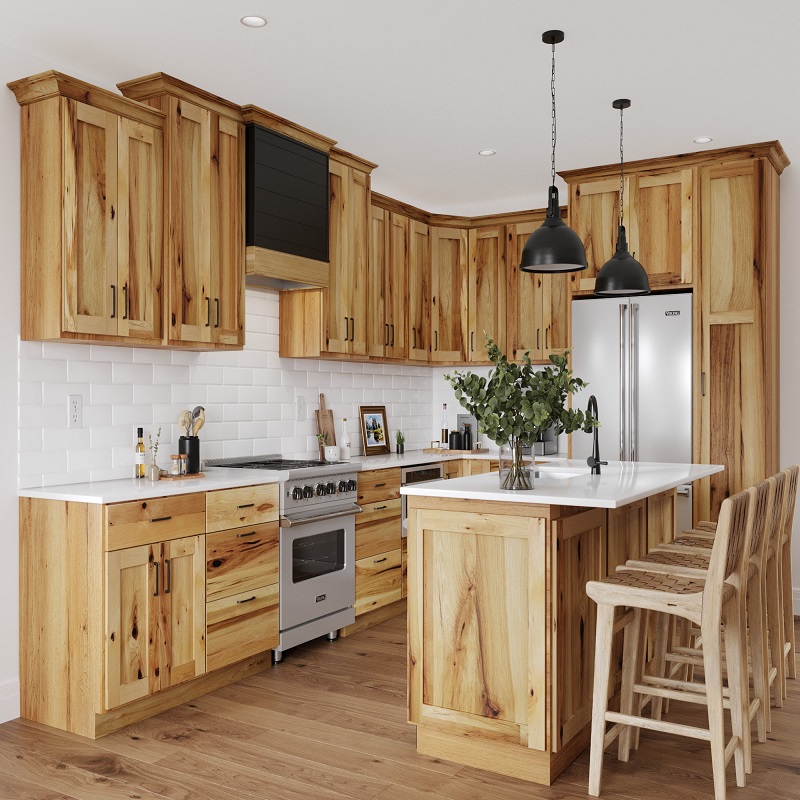
Conclusion
Selecting the right color scheme for kitchens with hickory cabinets involves considering the wood’s natural characteristics and how various colors will interact with it. From classic neutrals and earthy tones to bold and cool colors, each approach can create a unique look and feel. Whether you prefer a timeless, modern, or rustic style, carefully chosen colors and complementary elements will help you design a beautiful and functional kitchen space. By understanding the nuances of hickory cabinets and experimenting with different color schemes, you can achieve a kitchen that is both stylish and harmonious.






